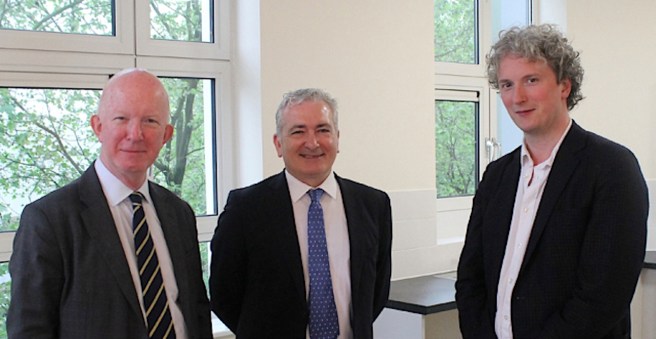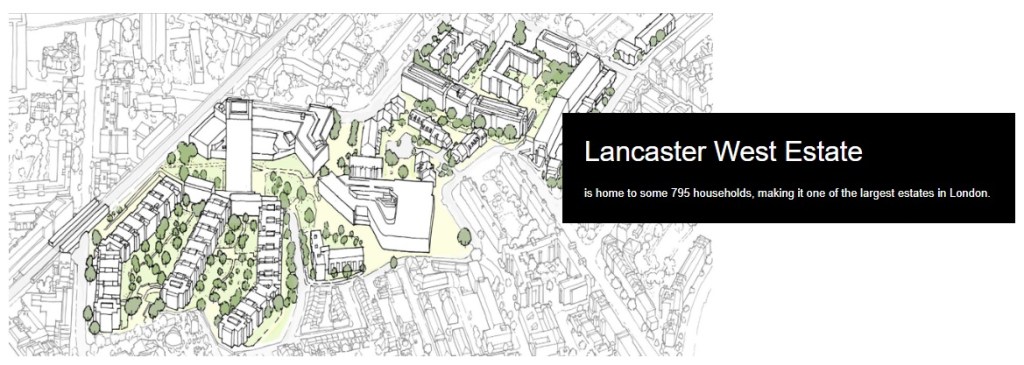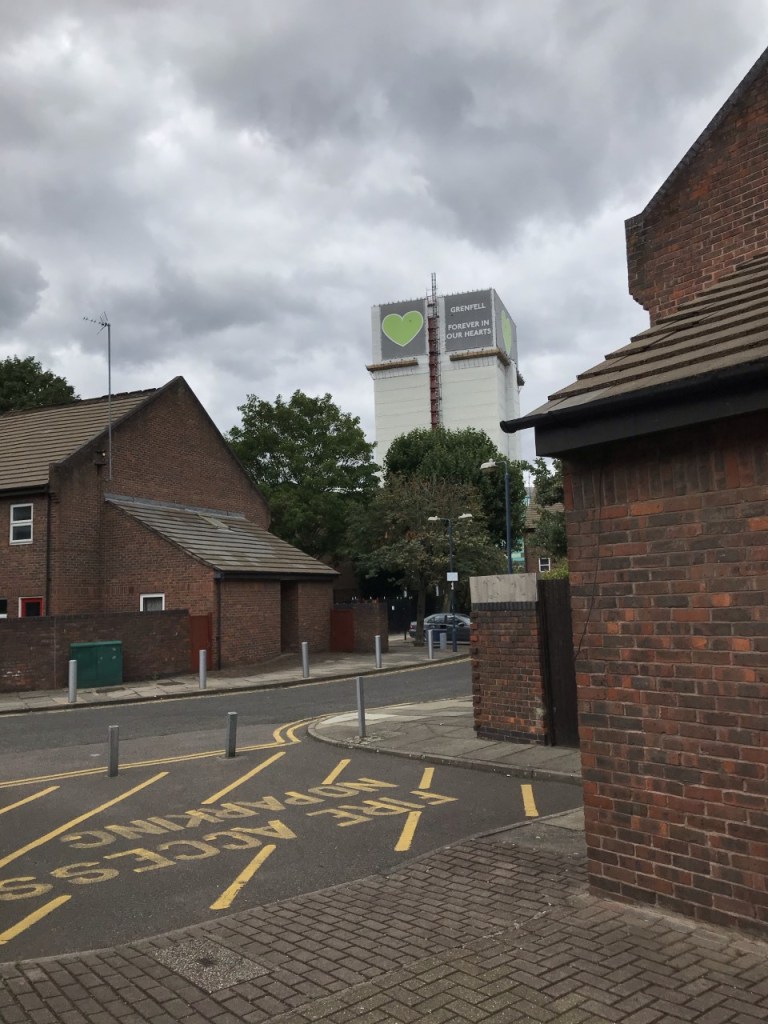The aristocratic politician who vanished from public view after the Grenfell Tower fire, Rock Feilding-Mellen, has re-emerged. Reinventing himself as a spiritual man working for the greater good, yet still a businessman; connected, dynamic and wealthy. Is that the reality? Or is he a man on the run? From justice, from North Kensington, from himself and the spectre of karma? Six years on from the atrocity, it is worth considering who Feilding-Mellen was, who he is, and what his transformed image means.

Image from Beckley Retreats
Who?
Rock Hugo Basil Feilding-Mellen is the son of Amanda Feilding, who also goes by the titles Countess of Wenyss & March and Lady Neidpath. The family are distant royals, a lineage tracing back to Charles II. Among the properties they own is Stanway House in Gloucestershire, which they promote as “an enclave of very English and almost magical harmony.”
As well as being steeped in aristocratic and feudalistic privilege, Amanda Feilding is also a drug reform campaigner, a sought-after “thought leader” in psychedelic drug research. The media has presented a bohemian, eccentric image of the family, but their radical credentials are limited to psychedelics and do not cross over into causes that challenge the status quo such as land reform or social justice. You can watch her drill a hole in her own head here.

Radical Politics
Rock Feilding-Mellen took a career in politics and in 2010 was given a safe Conservative council seat in Kensington, the most unequal local authority area in Britain. Just three years later, at the age of 34 and with no obvious expertise or qualification for either position, he was made Deputy Leader of Kensington & Chelsea Council (RBKC) and Cabinet Member for Housing, Property and Regeneration. This positioned him to become the most consequential politician in recent local history. Feilding-Mellen set about manifesting a vision of dramatically altered demographics and culture in North Kensington, stating that he wanted to “wean people off” the idea of being able to live in social housing in the borough.
Under the banner of ‘regeneration,’ Feilding-Mellen cut RBKC’s housing waiting list in half and imposed a decant policy which removed the right of return to their neighbourhoods for residents forced out. The deputy leader also set out on an aggressive campaign of asset stripping the north of the borough; his targets included the college, library, Westway Information Centre, Canalside House and whole housing estates, including Lancaster West, site of Grenfell Tower.
During this period, Feilding-Mellen was also a director of various small, possibly shell, companies including Socially Conscious Capital Ltd which deals in “strategic land promotion projects” and remains a going concern at Companies House.
The name Socially Conscious Capital jars, given that it was Rock Feilding-Mellen who oversaw and signed off on the 2016 refurbishment of Grenfell Tower, done on the cheap while RBKC sat on a third of a billion pounds of reserves. It appears that the deputy leader still planned to ‘regenerate’ Lancaster West, presiding over the local authority’s culture of cost-cutting and denigrating residents who raised their voices.
After the Fire
Feilding-Mellen was forced by the government to resign from his RBKC leadership roles in the wake of the Grenfell Tower fire. He retained a passive income from his councillor’s salary until the May 2018 election despite vanishing from public life.
Rock’s mother Amanda Feilding carried on seemingly without compunction. A month after the fire, Vice magazine showcased her pro-drugs health campaigning, with no mention of Grenfell Tower, and she gave further interviews and talks on psychedelics throughout 2017 as if nothing had happened in North Kensington.
Four years on from the fire, Rock Feilding-Mellen answered some questions at the Grenfell Inquiry. But the Inquiry Chairman, Sir Martin Moore-Bick, did the politicians, Tenant Management Organisation officers and corporates who played roles (prima facie) in the atrocity a huge favour by creating a gap of years before any criminal investigation would commence. Moore-Bick’s priority was to establish what happened, not who was to blame. Covid lengthened this lag and the precedent of people like Graham Mackrell (implicated in the Hillsborough disaster) show how the passage of time and expensive lawyers can provide a way out for those determined to avoid justice in cases where the British establishment has a vested interest in avoiding a reckoning.

Image from Grenfell Tower Inquiry
The tortoise pace and “merry-go-round of buck-passing” of the Inquiry has not served the victims, only the criminals and the establishment. And Rock Feilding-Mellen, by birth and through his deeds, is an establishment figure.
Psychedelics
In contrast to many in North Kensington who live in forced passivity, waiting for a sign of justice for Grenfell, Feilding-Mellen has been able to explore a wildly different lifestyle via the family business. His mother is Founder and Executive Director of the Beckley Foundation, a registered charity focused on drug policy reform and scientific research into psychoactive substances. The foundation is named after Beckley Park, an Oxfordshire country house owned by various Royals, Dukes and Lords. Used historically as a hunting lodge by Kings, and possessing three moats, it is one of Amanda Feilding’s properties.
Beckley has two for-profit offshoots; one is Beckley Psytech Limited, a drug research company overseen by Amanda’s other son, Cosmo. Despite reporting a loss of over £9 million in 2021, Beckley Psytech also reported retained total assets of over £67 million.
Rock Feilding-Mellen co-founded and directs the other offshoot, Beckley Retreats, a company that offers supervised, legal psilocybin retreats in Jamaica and The Netherlands. Beckley offers 11-week programmes for participants, including online preparation, five nights of immersive retreat and support afterwards. The retreats are not cheap, but bursaries are made available, and Feilding-Mellen has stated that he wants to expand the availability of bursaries to enable more people to benefit from the healing and awakening experiences accessible through psychedelics.
After the Grenfell Tower fire and his enforced resignation from his cabinet roles at Kensington Town Hall, Feilding-Mellen apparently went into hiding. For months, posters in North Kensington asked where he had disappeared to.


But the protracted progress of the Grenfell Inquiry sheltered Feilding-Mellen from public accountability for years, and the national media had lost interest in him by August 2017.
Numerous sources who knew him in both his politician and businessman days recall a man so arrogant and without regard for others that they assumed he took cocaine before every meeting. As a young man, Feilding-Mellen would apparently startle rooms of seasoned businessmen with his projection of absolute entitlement. Community leaders in North Kensington say that, while he liked to present himself as dynamic and entrepreneurial, he was transparently an old-school Conservative politician pursuing the interests of his class. It is not known to us whether or not Feilding-Mellen has a diagnosis of sociopathy or psychopathy, but his conduct in Kensington was consistent with somebody devoid of empathy and filled with a grandiose sense of self. These same traits are no barrier to somebody transitioning to an entirely new image by learning how to present certain emotions that elicit sympathy from empathic people.
Among the stable of right-wing Tory councillors that dominated the local authority, Feilding-Mellen was the youngest and most ambitious. Perhaps it was deference to his ancestry that inspired his colleagues to prematurely promote somebody with no obvious talent to a position of significant power. Or, with the unleashing of so-called austerity in 2010, the Kensington Conservatives knowingly used Feilding-Mellen as their attack dog against the working class communities of the borough, knowing that with every action taken against the population, a reaction would come in the form of resistance. Some Tory councillors from that era remain in cabinet roles including one who is now RBKC’s leader.
It is easy to argue that Rock Feilding-Mellen did more than any other individual to establish the conditions and normalise the attitudes that played out in the run-up to the Grenfell Tower fire. His personality and ambition, and the power he was gifted, added to his determination to lead a devastating demographic transformation of North Kensington created circumstances that reflected his destructive attitudes towards poorer communities.
Rock’s Recovery

On the fourth anniversary of the fire, Forbes Magazine published a reverential piece on Amanda Feilding and her commitment to “cognitive liberty.” The impression is of Beckley being an enterprise aimed at some kind of common good but operating in a silo, and now being utilised to stage manage Rock Feilding-Mellen’s rehabilitation, possibly an important element in future court appearances. Beckley’s public relations output use the horror of Grenfell to portray Feilding-Mellen as a victim, with no hint at his true role.
Beckley’s copywriters use the passive voice around the Grenfell atrocity to re-position Rock as a man of vulnerability and virtue: “In his mid-thirties, a tragedy left him feeling purposeless and lost.”
Beckley’s website doesn’t identify Feilding-Mellen as a politician. He has moved on, “an entrepreneur and investor” who “seeks to create, cultivate and support start-ups that are poised to provide transformational benefits to individuals and our society at large through finding innovative solutions to the growing epidemic of mental illness or through finding new ways to boost creativity and connectedness.”
His political career in Kensington is brushed off as “rebelling against his upbringing” by his hippy parents. This rebellion ended with the devastation at Grenfell Tower, but this had a positive outcome for Rock that the reader is presumably supposed to be happy about: “It was only then that he found himself willing to explore that which his mother had long championed….finally seeing how transformative and regenerative the use of psychedelics could be.”
A section on the Beckley website titled “His Why” explains that psychedelics saved Feilding-Mellen from “a pit of cynicism” and inspired him to “help other skeptics and ‘realists’ discover the strength and joy that come from perceiving that we live in an enchanted universe.”
Rock states: “I am dedicated to helping others in the same way I was helped, to turn their lives around and see the wonder all around them.”
Does Feilding-Mellen need to package his story in such a sanitised, corporate-friendly way? Does he need to publicise his agonised spiritual awakening and personal development, only achieved on the back of his rapaciously abusive policies that targeted the most vulnerable in society? Perhaps he does, if he is to convince two audiences of his innocence: himself, and further down the line, possibly a judge.

Feilding-Mellen (right) with then-RBKC Leader Nicholas Paget-Brown (left) and leader of the now-disbanded KCTMO Robert Black inside Grenfell Tower during its refurbishment, 2016.
A supposedly transformed and regenerated human being, reset by psilocybin and meditation, yet in his appearance on the New Health Club podcast, Feiling-Mellen sounded very much the politician or businessman, focusing on the practical aspects of Beckley’s work, glossing over the absence of any personal spiritual insights by saying “I try very hard not to wang on too much about my connection to the divine” and “I try not to sound too woo-woo.”
Feilding-Mellen stated that he remains “mission driven,” focusing on the “core delivery side of the ecosystem” of the company and wants to “harness the best bits of capitalism” to expand the good work of Beckley.
Meanwhile, in Kensington
Suicides, trauma, depression, poverty, and no sign of justice. Such is the design of British society that somebody of the almost inconceivable privilege of Rock Feilding-Mellen can be confident that he will remain protected. He can believe that he is not guilty of an all-out attack on the poorer communities of North Kensington and all that brought; that he is in fact a victim.
Feilding-Mellen, with no apparent talent and without having contributed anything productive to our economy, can simultaneously reinvent himself as a spiritualist and enrich himself with a new venture that not only maintains high social status but also promises serious dividends as psychedelic treatments become a boom industry.
Privilege is sheltered from justice, then demands that it must feel and be accepted as virtuous, no matter how many people suffer for these brief releases of the feel-good chemicals in the brains of the least self-aware people in the country.
Like the crime at Hillsborough, most of the people affected by the atrocity at Grenfell Tower are stuck in a form of purgatory, unable to move on while justice is denied; unable to have faith in a system that is stacked against them; yet unable to give up hope for some kind of justice as that would be to dishonour those lost. In contrast, it’s a time of abundance for the spiritual-corporate complex, mainly because it has been co-opted as a means for the worst people in the world to feel good about themselves without the boredom of contemplation or the burden charitable giving found at the heart of the major religions.
Beckley Retreats and Rock Feilding-Mellen’s re-emergence without repentance are now intertwined. It is difficult to know what to make of Beckley as company, founded by Feilding-Mellen and presumably staffed by people who know his background yet proceed, “committed to diversity, equity, inclusion and belonging.” As Deputy Leader of Kensington & Chelsea, Feilding-Mellen would have known the council’s motto: ‘Quam Bonum In Unum Habitare’ – ‘What a good thing it is to dwell together in unity.’ Nobody would invoke RBKC’s motto as evidence of the council doing good work. Similarly, nobody should be fooled by the fine words of Beckley Retreats’ public relations when it comes to assessing whether Sinnerman Rock has changed.
He has landed in the perfect safe place for somebody desperately needing a rebrand ahead of at least one day of judgement.
by Tom Charles @tomhcharles



























